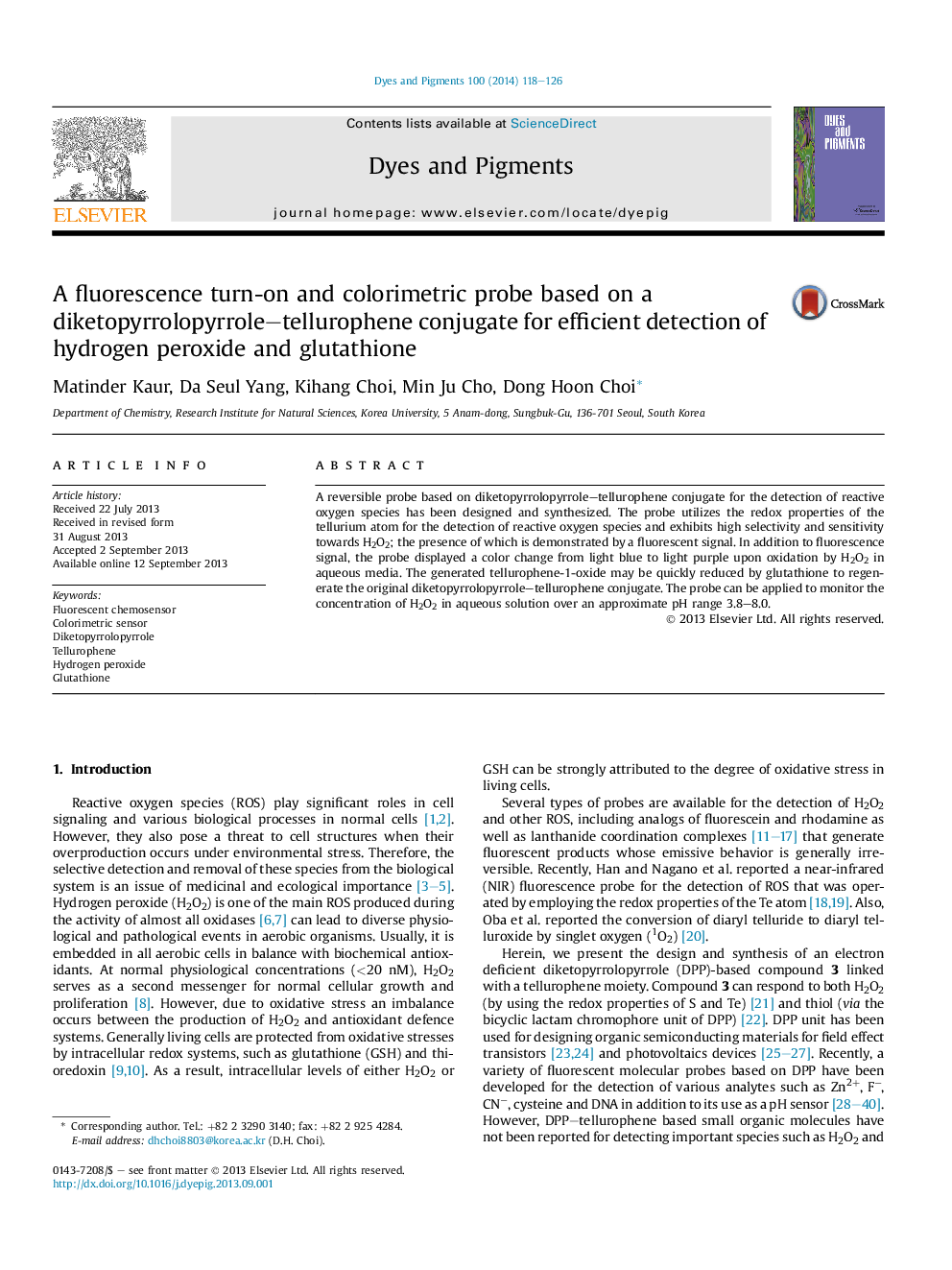| Article ID | Journal | Published Year | Pages | File Type |
|---|---|---|---|---|
| 176310 | Dyes and Pigments | 2014 | 9 Pages |
•A reversible probe based on a diketopyrrolopyrrole–tellurophene conjugate has been synthesized.•The probe was effective for the detection and discrimination of reactive oxygen species.•The probe is readily oxidized by H2O2 to afford a fluorescent telluorphene-1-oxide species.•The oxidized probe is readily reduced by glutathione to regenerate the original species.
A reversible probe based on diketopyrrolopyrrole–tellurophene conjugate for the detection of reactive oxygen species has been designed and synthesized. The probe utilizes the redox properties of the tellurium atom for the detection of reactive oxygen species and exhibits high selectivity and sensitivity towards H2O2; the presence of which is demonstrated by a fluorescent signal. In addition to fluorescence signal, the probe displayed a color change from light blue to light purple upon oxidation by H2O2 in aqueous media. The generated tellurophene-1-oxide may be quickly reduced by glutathione to regenerate the original diketopyrrolopyrrole–tellurophene conjugate. The probe can be applied to monitor the concentration of H2O2 in aqueous solution over an approximate pH range 3.8–8.0.
Graphical abstractA reversible probe based on a diketopyrrolopyrrole–tellurophene conjugate (3) has been design and synthesized. The probe was effective for the detection and discrimination of reactive oxygen species. The probe is readily oxidized by H2O2 to afford a fluorescent telluorphene-1-oxide species. The oxidized probe is readily reduced by glutathione to regenerate the original species.Figure optionsDownload full-size imageDownload as PowerPoint slide
